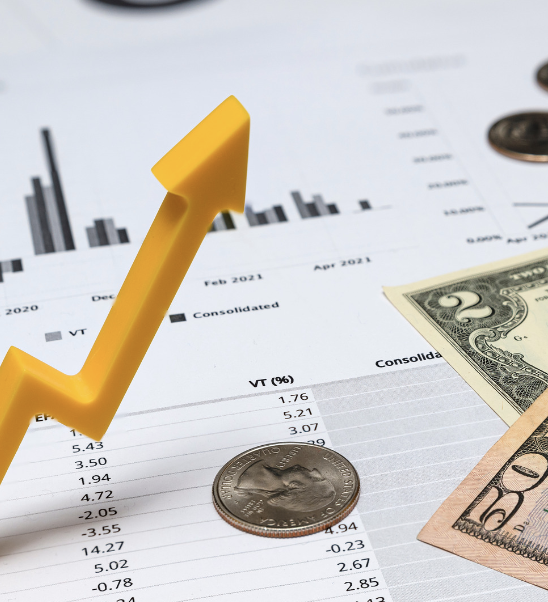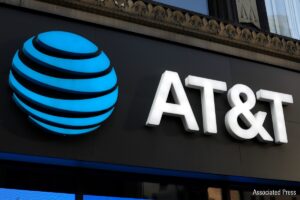This week, the World Bank highlighted geopolitical tensions and trade disputes as potential threats to the world economy.
Global economic growth will remain stable at 2.6% in 2024, according to the World Bank, which increased its earlier forecast from 2.4% growth. However, the organization did stress that the expansion would not be uniform or comparable to the rate observed before to the COVID-19 epidemic.
World Bank chief economist Indermit Gill said in a news release that “global economic growth is steadying” four years after the pandemic, wars, inflation, and monetary tightening created chaos. Nonetheless, growth is smaller now than it was before to 2020. Even more concerning are the prospects for the economy of the world’s poorest countries.
These are the three dangers that the World Bank notices.
High rates of interest. Inflation will decline more slowly than predicted six months ago, according to the organization, reaching 3.5% this year and 2.9% in 2025. In 2025 and 2026, global interest rates are projected to average 4%, which is about double the average of the two decades before the epidemic, according to the World Bank.
Key interest rates have been slashed by the Bank of Canada and the European Central Bank in the last few weeks. On Wednesday, the US Federal Reserve kept interest rates unchanged for the seventh day in a row, but no one has followed suit.
Reducing its forecast for rate reduction this year from three to one, the Fed also made further cutbacks. While Chair Jerome Powell did note the success in bringing prices down, he reiterated that the Fed would not ease monetary policy until inflation approaches its 2% objective.
The World Bank’s deputy chief economist, Ayhan Kose, said in a press release that “higher-for-longer” interest rates will lead to more stringent global financial conditions and much slower development in poor nations.
Conflicts in international politics. The World Bank has warned that rising oil and transportation costs might slow global economy as a result of spillover risks caused by the wars between Russia and Ukraine and Israel and Hamas.
Wednesday saw the price of international oil futures settle at $82.60 a barrel, marking a decrease from the initial rises caused by both hostilities. Attacks on container ships in the Red Sea, a key commerce route, have increased shipping prices and caused delays.
“Business and consumer sentiment could take a hit as a result of escalating conflict, which could lead to increased risk aversion and dampen demand and growth,” the research said.
Issues of power. Risks may also arise from a number of potential leadership changes in the administration this year. Numerous nations, including India, Mexico, the US, France, and the UK, have recently had or will soon hold important elections.
Already, several of the most powerful economies in the world are starting to tense up their trade relations. Earlier this month, China made it clear that it is strongly opposed to additional tariffs imposed by the US on $18 billion worth of Chinese electric cars and other items. The Chinese government has warned that these trade barriers might have a negative impact on the overall relationship between the two industrial giants.
When that, Beijing retaliated when the European Commission said on Wednesday that the EU would be increasing duties on electric vehicles imported from China.
“Prospects for trade and economic activity could be dampened by increased uncertainty surrounding trade policies and the possibility of policies that are more inward-looking,” the World Bank research said.
Going out to eat still costs more than it did when food prices leveled off.
After a little decline in April, grocery costs were unchanged in May. According to my coworker Danielle Wiener-Bronner, menu prices are continuing to rise, which is frustrating for customers who are watching their spending. This is happening even if businesses boast about having reduced meals.
Based on inflation statistics issued Wednesday by the Bureau of Labor Statistics, sit-down restaurant menu prices increased 0.4% from April to May, after accounting for seasonal fluctuations. quick casual and quick food restaurants, which are considered limited service places, had a 0.2% increase in pricing over that period.
Throughout the year, there was a more noticeable disparity between food price rises and menu price inflation. From May until the end of the year, grocery costs increased by 1%. Menu prices at sit-down, full-service restaurants increased by 3.5% over that time. They increased by 4.5 percent at quick-service restaurants, which include both fast food chains and more casual eateries.
Customers have cut down on spending and taken to social media to complain about the price hikes, which has hurt the fast food industry’s image as an affordable option.
Although annual price increases are par for the course in the restaurant industry, the recent epidemic has seen an unprecedented flurry of pricing increases. The executives took notice of the fact that, initially, customers weren’t put off by the increased pricing. However, consumers eventually lost it, causing several chains to change their ways and even become defensive.
In a recent open letter, McDonald’s USA president Joe Erlinger revealed that, over the last five years, prices had increased by around 21%. He clarified that this is lower than inflation in general, not 100% as some may assume based on a study by FinanceBuzz. Prices at McDonald’s have increased by 100% since 2014, according to a new study. However, he did concede that Big Mac meals may be priced much more in some areas. Dissatisfaction with McDonald’s $3 hash browns and $16 dinners has gone viral on TikTok.
Attempts by politicians to win over TikTok users continue. Despite popular belief, TikTok isn’t really a political hotspot, according to its users.
According to new poll results published Wednesday by the Pew Research Center and the John S. and James L. Knight Foundation, the focus on TikTok as a significant political force in the US does not seem to reflect the reality for the majority of users.
Politicians are going to great lengths to court young voters on TikTok, a short-form video app that has amassed 170 million US users. In only a few days after joining TikTok last week, former president Donald Trump had six million followers. The campaign of Vice President Joe Biden began posting videos on TikTok in February and has since produced over 200 of them; but, with just 373,000 followers, it is far behind Trump’s campaign.
However, some lawmakers have voiced concerns that the Chinese government may attempt tremendous political influence in the US if it had access to the personal information of TikTok members, given the firm’s ties to China via its parent company. (Last spring, Biden signed a bill that may prohibit the app from the US. TikTok is seeking to prevent the measure and denies ever giving the Chinese government US user data.)
Pew Research Center’s most recent polls, however, create a picture that shows politics is still relatively minor on the platform.



